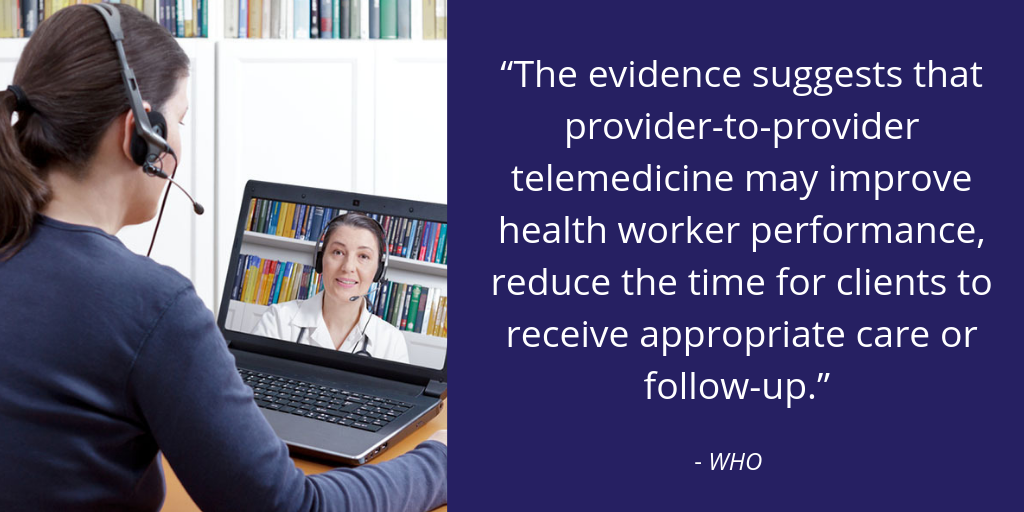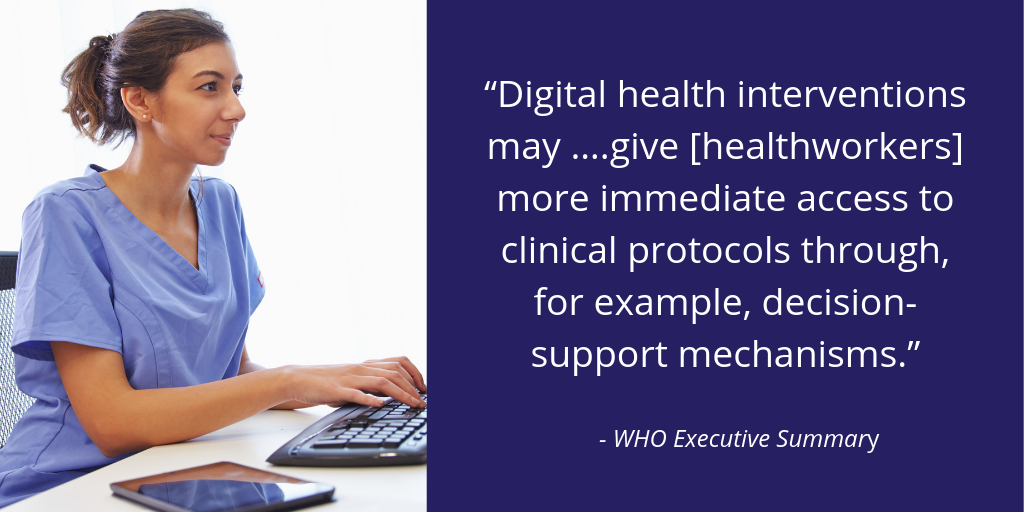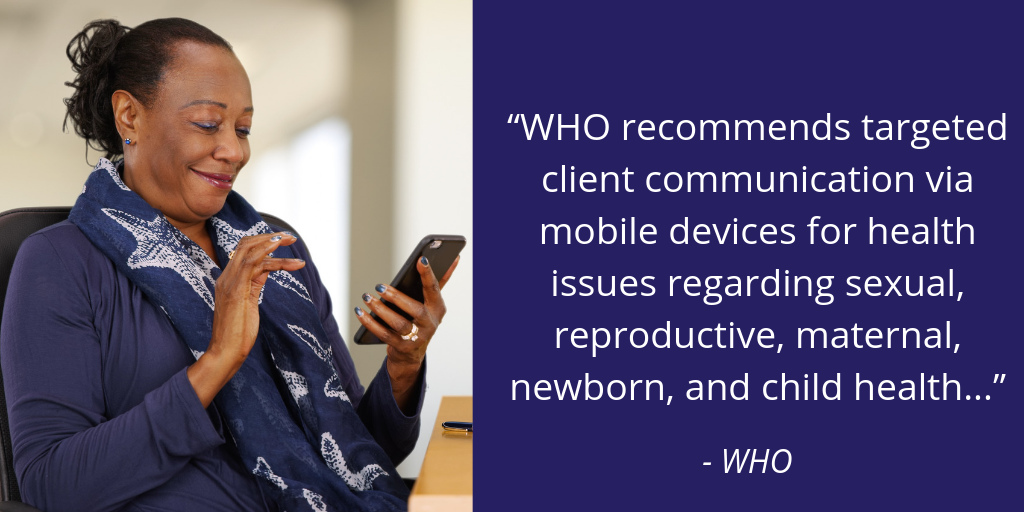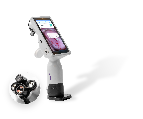The World Health Organization recently published its first guidelines on digital health outlining their vision for how digital healthcare solutions can improve and save lives. The potential impact on women’s health is particularly profound. We asked three experts to examine the guidelines from a women’s health perspective, see which are already in use in the field and share their predictions for the future.
Provider-to-provider teleconsultation
Dr. Jonah Mink Medical Director MobileODT works with clinicians from around the world to ensure that the technology being created fits the needs of healthcare workers in the field.

Digital technology in healthcare must be seen as a tool to help clinicians do their jobs and not as an end in itself. The capacity of digital communication between providers is an exciting new tool for expanding expert care. For women’s health, the capacity to bring expert care to local clinics is particularly impactful.
Ideally, we would all want to have personal face to face supervision of all trainees and junior staff but practical realities make that impossible. One expert simply can’t go everywhere in person. Digital technology possesses an enormous power to overcome physical barriers and connect clinicians, allowing for quality assurance and immediate consultation.
When once, an expert who wanted to offer training or advice to a colleague had to travel to meet them in person, now they can both stay in their local clinics and connect virtually. Today by using teleconsultation via video link-up or remote case sharing, clinicians can receive immediate feedback.
Read more about how telehealth can expand access to advanced gynecological examinations >>
In women’s health, teleconsultation will have a profound impact. For many women in any setting, there is a significant unseen burden to accessing healthcare; arranging childcare, missing time from work, travel expenses, etc. The more care that is locally available, the more women who will be able to access it.
In many cultures, the issues covered within gynecology are deeply sensitive. Enabling women to receive the bulk of their gynecologic care within their local clinic with their familiar healthcare providers, will help women feel comfortable during their entire treatment.
I expect to see a dramatic increase of provider to provider teleconsultation simply because it makes the most of human resources, which is the essential component of healthcare.
Digital health as clinician decision support
Yael Misrahi leads MobileODTs global work with our research partners seeing how new solutions can bring improved healthcare to women around the world.

We often think of expanding access to care as being an issue for low resource settings, but having adequate access to healthcare is an issue for women all around the world. One significant factor is in ensuring the local healthcare workers have the training and support they need to make good healthcare decisions.
Clinical decision support is a huge benefit to clinicians. We all want to know that we are making the right call at the point of care. With new digital healthcare platforms, we are now able to offer expert input like never before.
AI (augmented intelligence) holds the power to bring an unprecedented level of decision support to clinicians at a minimal cost. AI algorithms can be trained to recognize patterns at the same level of accuracy as human experts or better. This has been demonstrated in a number of fields, including cervical cancer screening. AI can act as a guide for clinicians, either verifying their clinical impression or giving them cause to seek another professional opinion. Google’s work at detecting lung cancer, the IDx-DR system which detects diabetic retinopathy, and Zebra Medical’s work radiology are notable examples.
See how the development of the AVE algorithm is bringing AI detection to cervical cancer screening>>
With an AI-powered clinician decision support as a reference, a wider range of clinicians will be able to diagnose and perform procedures that previously relied upon expert input, significantly increasing access to advanced care.
I personally predict an increase in the use of AI and of connected, wearable devices. AI both for clinician support and patient use, further empowering individuals to take control of their health.
Digital healthcare for patient centricity

Global development professional, Cathy Sebag works with the MobileODT Product department, guiding the product development process.
Women are frequently the ‘guardians’ of their families’ health. They are responsible for the health of their children and often the health of the elderly. Their own health can have a significant effect on the wellbeing of their family, both in the health of their children during pregnancy and also maintaining their ability to care for their family. Every family is unique- and there is certainly no one size fits all.
While women make 80% of healthcare decisions for their families, little investment is made into technology that actually meets the health care needs of the women themselves.
With the EVA System, many of our providers use the cervical images to show women an image of the cervix following an exam, engaging them in the process, and allowing them to make more informed decisions about their own bodies.
Tools for women that enable them to make good healthcare choices for them and their families are welcomed. Digital technology can connect women to clinicians for monitoring, advice, and referral in a safe way. And it is important that we do not leave any woman behind no matter what her circumstances might be- whether she is low-income, or living in a rural area or LMIC.
An emerging market is AI tools that can be used by both experts and non-experts alike to bring advanced procedures to women everywhere, while alleviating the burden of training, expensive equipment, and laboratory infrastructure. Many of these tools serve as ‘early warning’ mechanisms for disease prevention where preventative healthcare was never available before.
Others help women track their menstrual cycles for natural family planning, pregnancy tracking, and so much more. AI is one of the areas that have the potential to make a profound impact on preventative medicine and also for women to hold the rights to their own care within and outside a clinic.
The rush of new technology focused on women’s specific needs is extremely positive, but there are still major concerns around protecting privacy and rights. Much reproductive and sexual health information can have serious implications in certain cultures, where unintended consequences of data leakage to family, friends, employers, and communities can lead to stigma and extensive repercussions. We all have a role as development and technology professionals to ensure the highest level of protection- and I am proud we do just that at MobileODT through complex systems to keep patient information secure.
I look forward to seeing more digital health solutions that are tailored to women’s needs, expanding their access to reliable healthcare in safe ways.
Learn more about how the EVA System is creating new horizons in global women’s health >>







